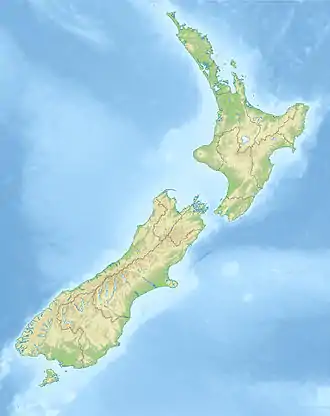Cave Creek / Kotihotiho
Cave Creek / Kotihotiho (Māori: Kotihotiho)[1] is a small river within Paparoa National Park, on the West Coast of New Zealand's South Island.
| Cave Creek / Kotihotiho | |
|---|---|
 Location of Cave Creek / Kotihotiho | |
| Native name | Kotihotiho (Māori) |
| Location | |
| Country | New Zealand |
| Region | West Coast |
| Physical characteristics | |
| Source | Cave Creek Resurgence |
| Mouth | Pororari River |
• coordinates | 42.1173°S 171.3956°E |
The creek takes a portion of its name from the limestone cave from which it emerges, flowing through Paparoa National Park's karst landscape for roughly 5 kilometres (3.1 mi) before joining the larger Pororari River. In 1998, the creek became one of approximately 90 places to be given a dual place name, composed of the former name and the Māori name separated by a slash, through the passage of the landmark Treaty of Waitangi settlement with Ngāi Tahu.[2]
Cave Creek / Kotihotiho is most known for the 1995 Cave Creek disaster, in which 14 people died following the collapse of a viewing platform. The rough and difficult landscape which the creek flows through hindered rescue efforts, while the disaster itself led to health and safety reforms in New Zealand and upgrades to Department of Conservation facilities across the country.[3]
References
- "Place name detail: Cave Creek / Kotihotiho". New Zealand Gazetteer. New Zealand Geographic Board. Retrieved 20 November 2021.
- "Ngāi Tahu Claims and Settlement Act". legislation.govt.nz. Parliamentary Counsel's Office. Retrieved 19 November 2021.
- "Cave Creek". my.christchurchcitylibraries.com. Christchurch City Libraries. Retrieved 19 November 2021.